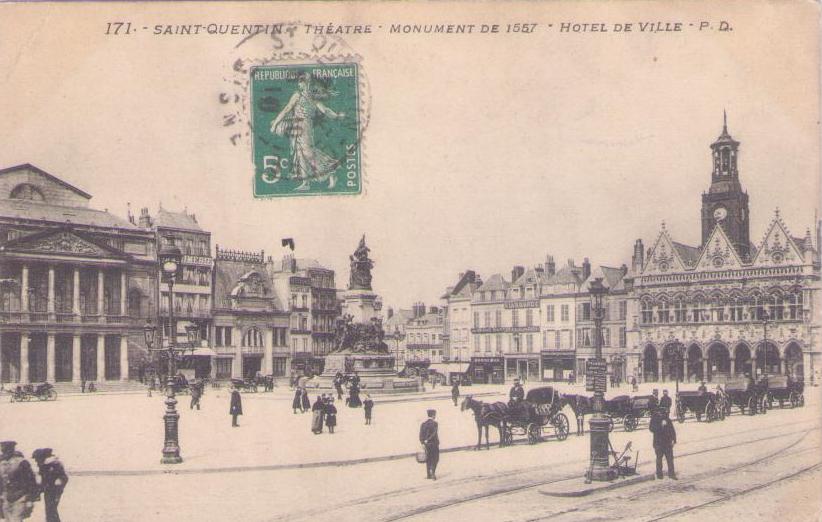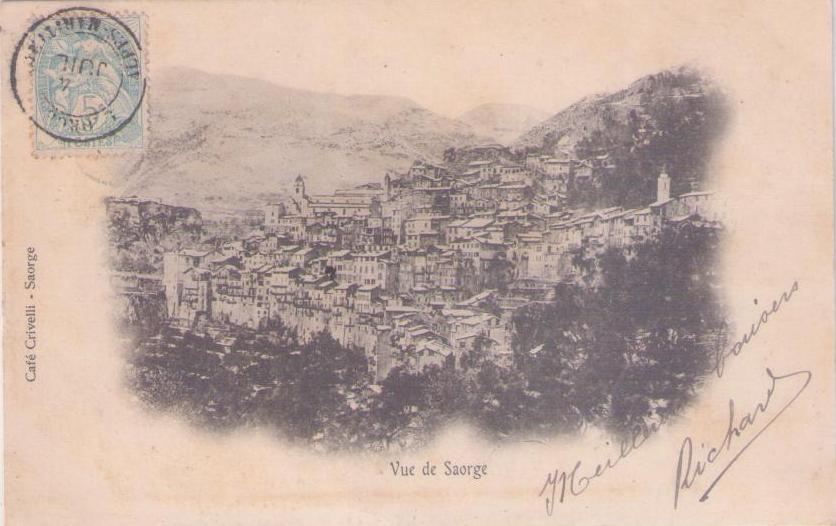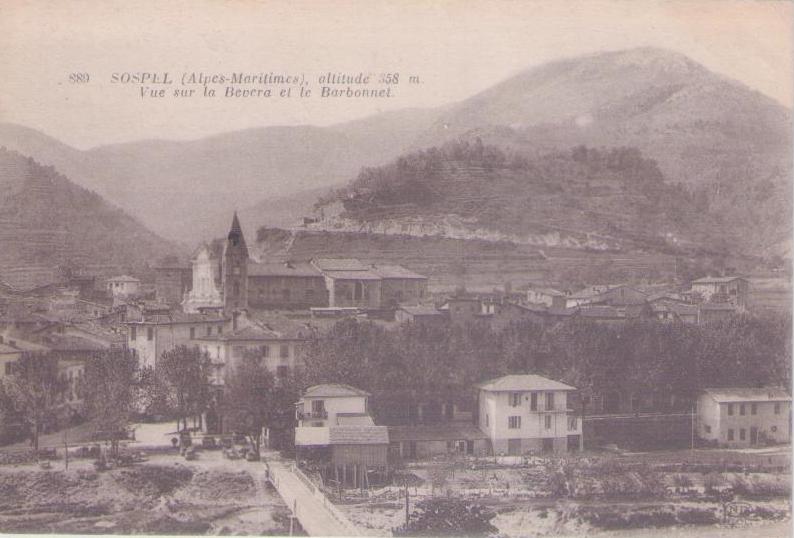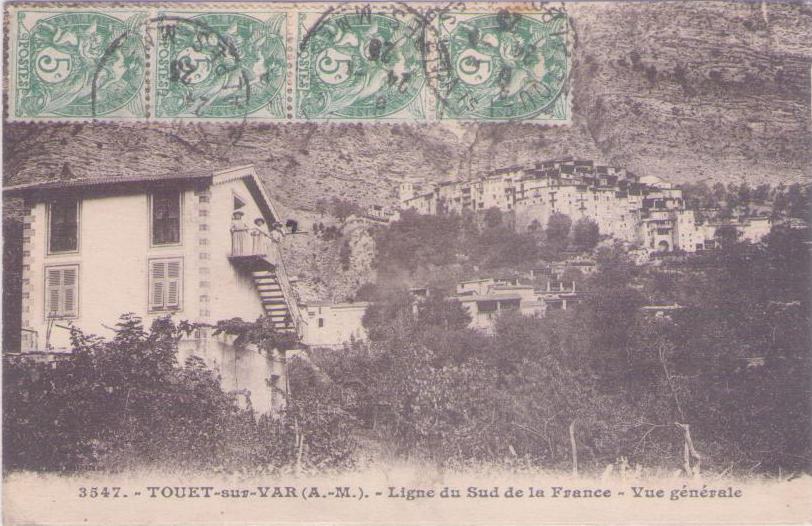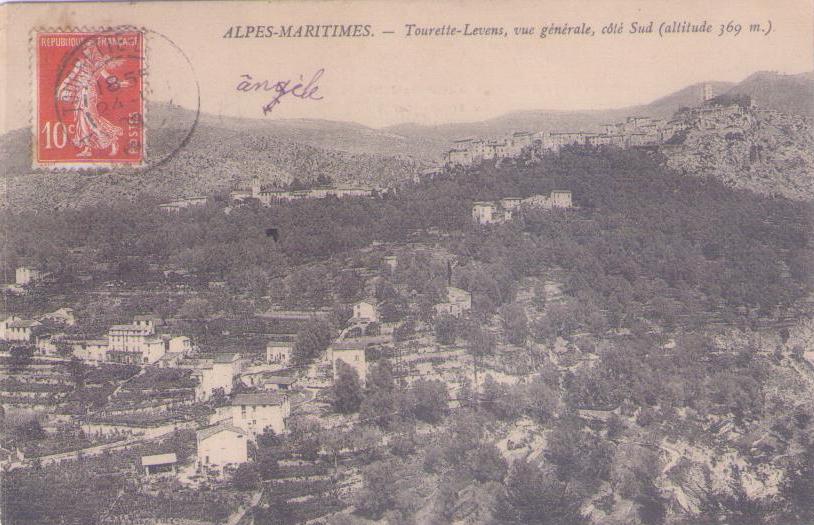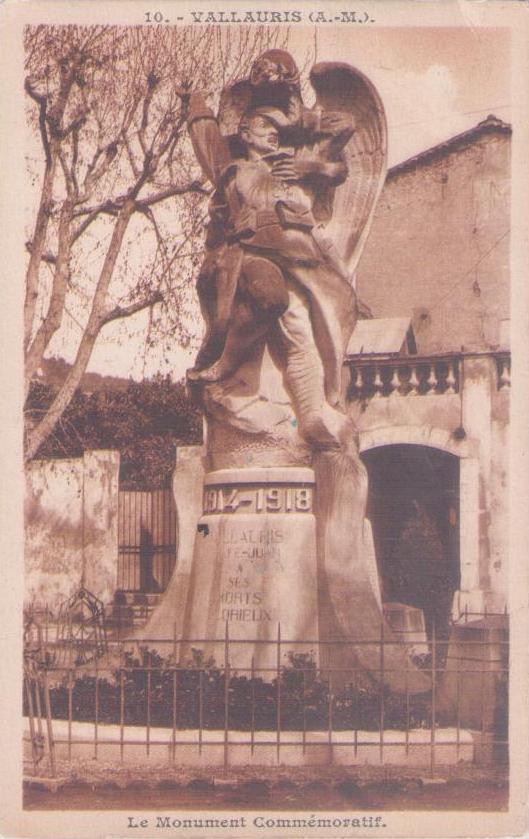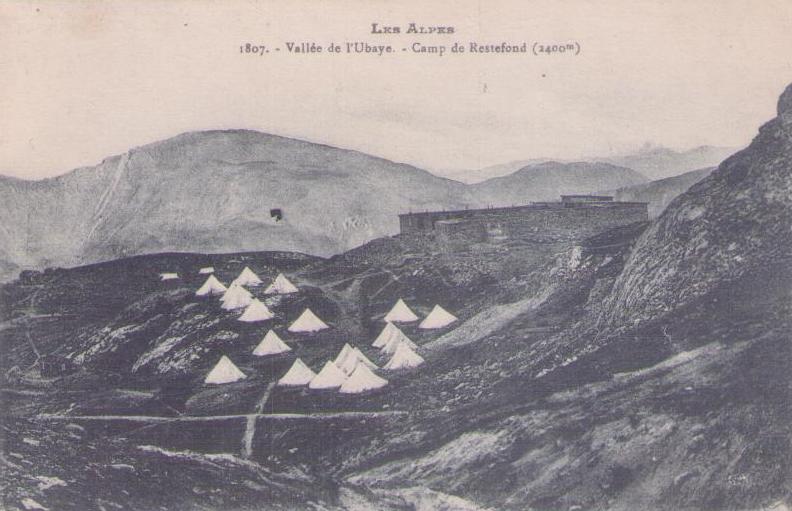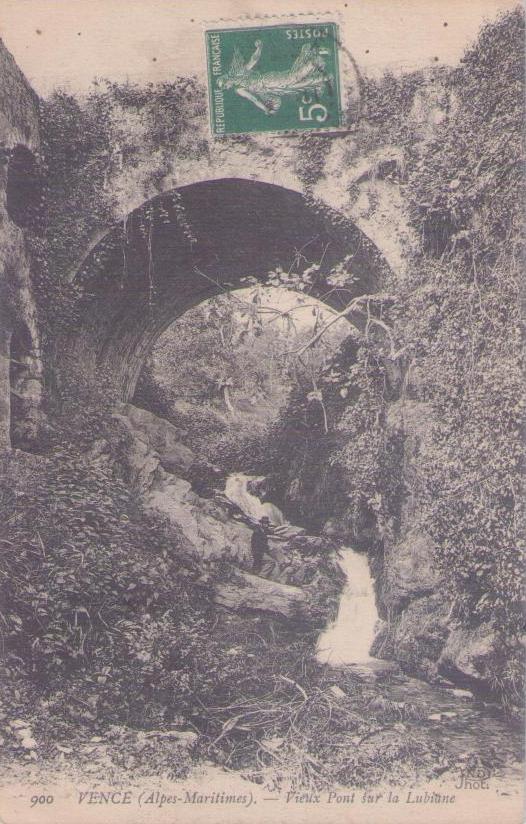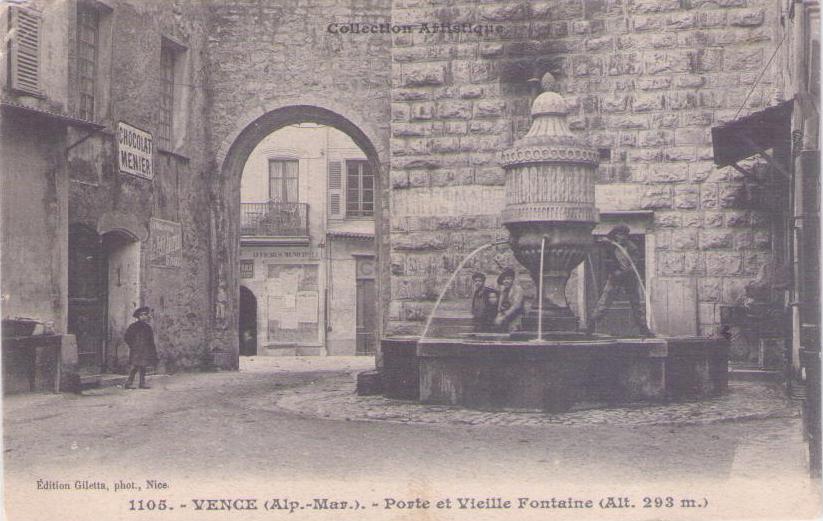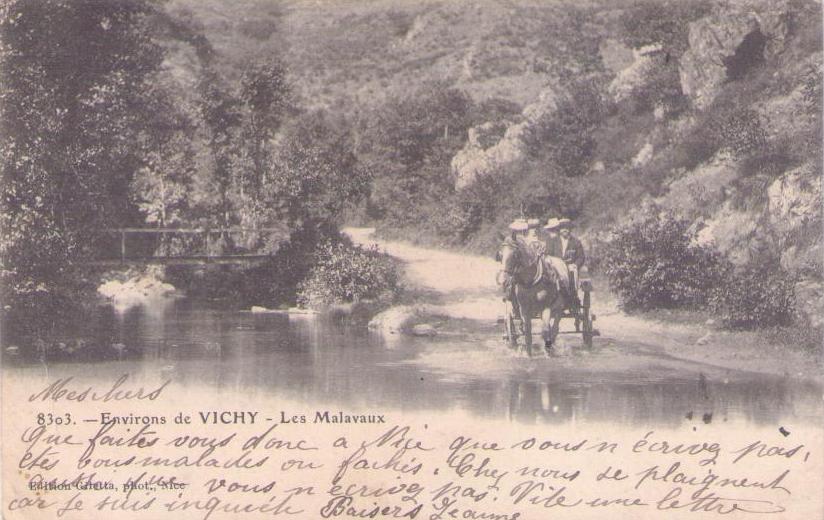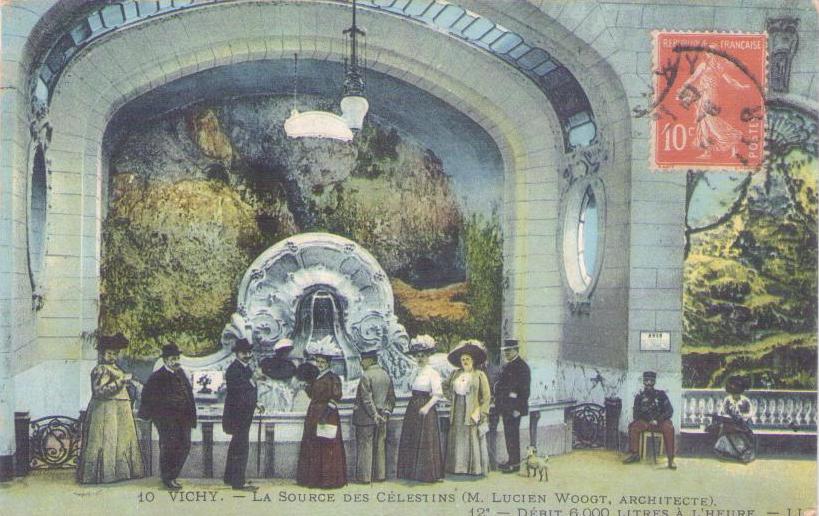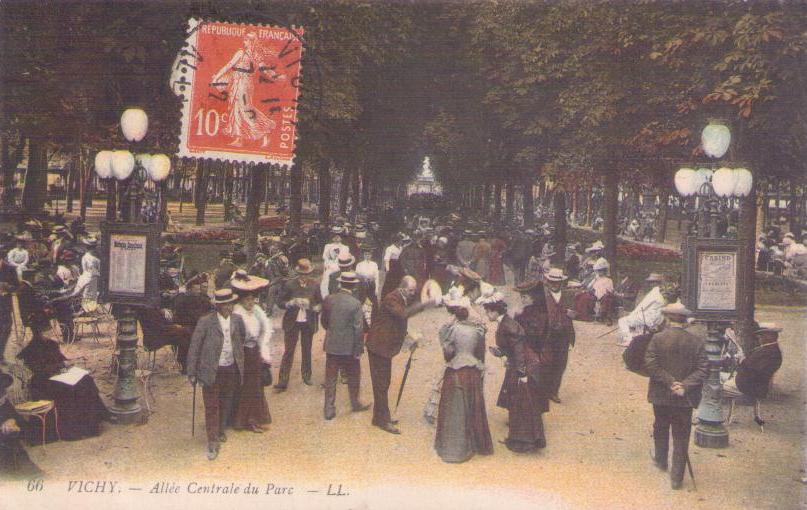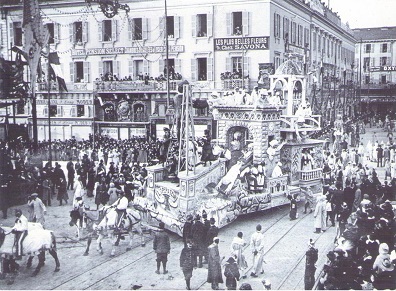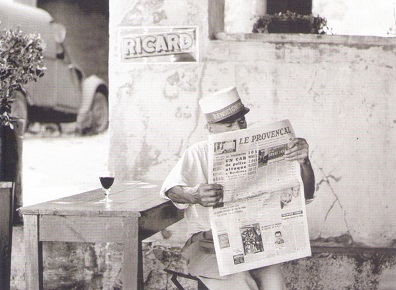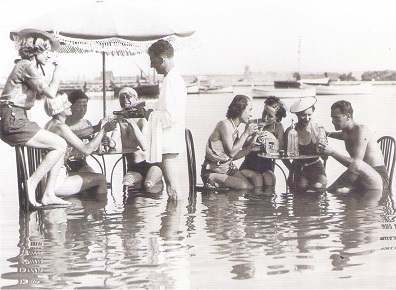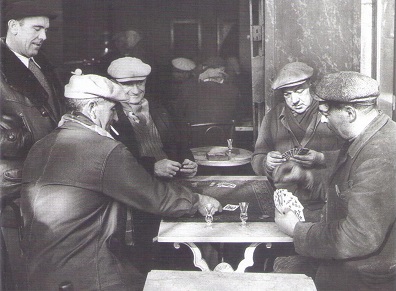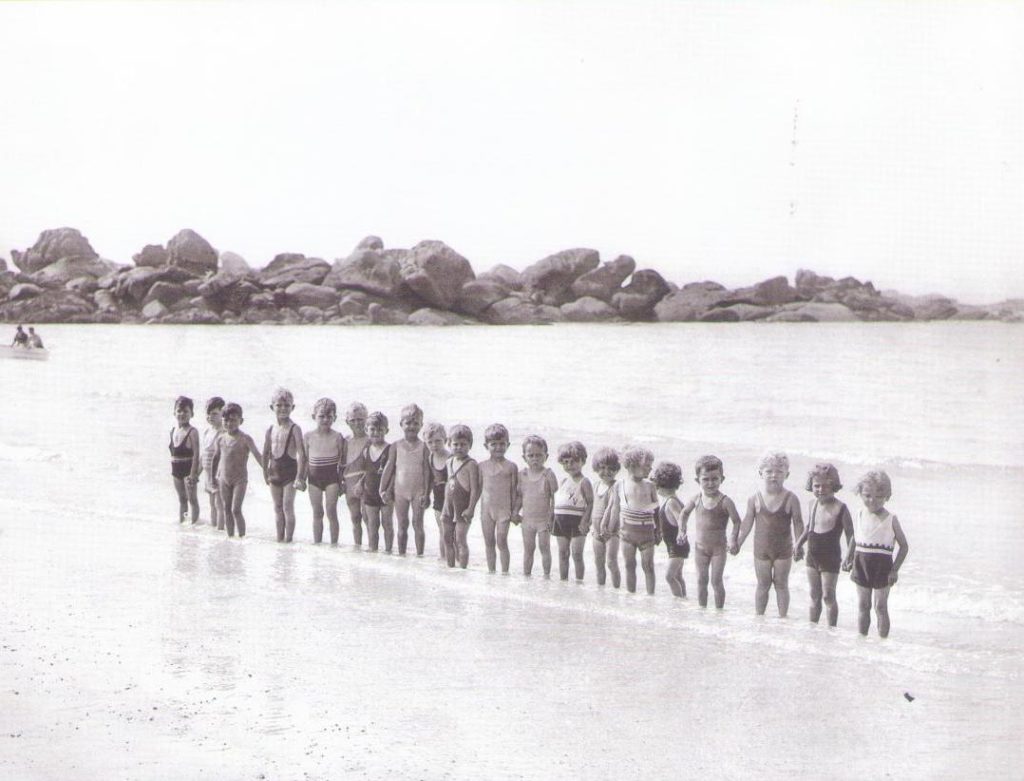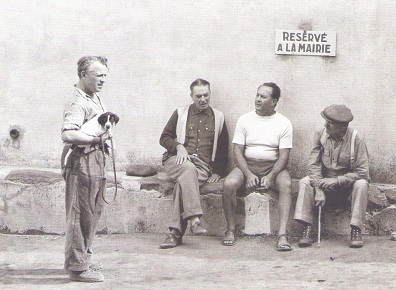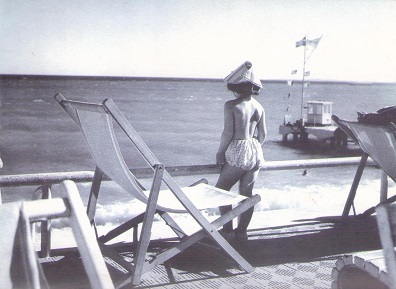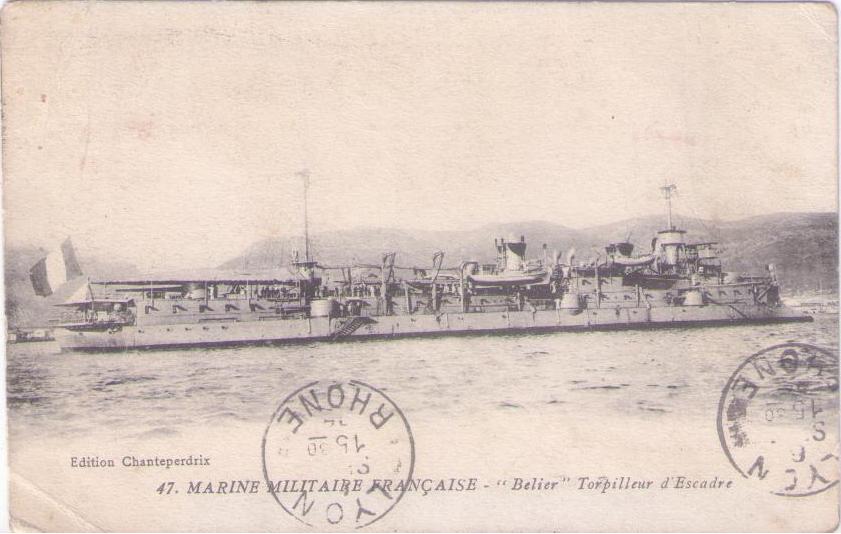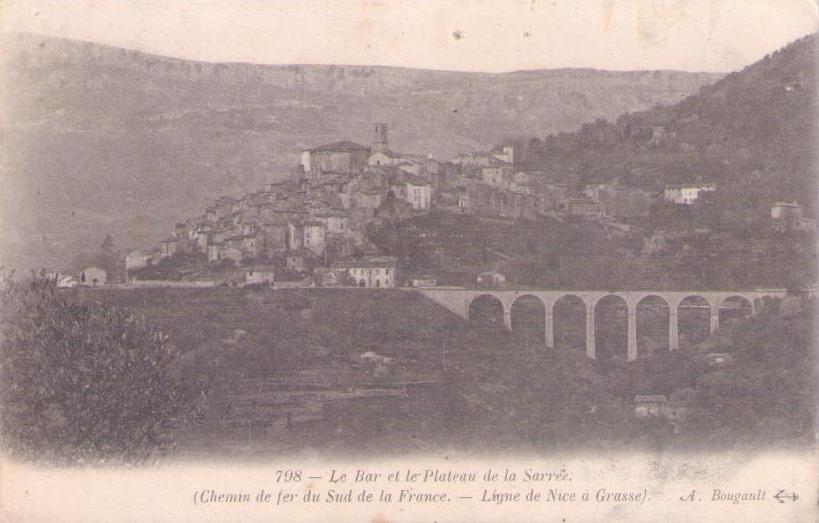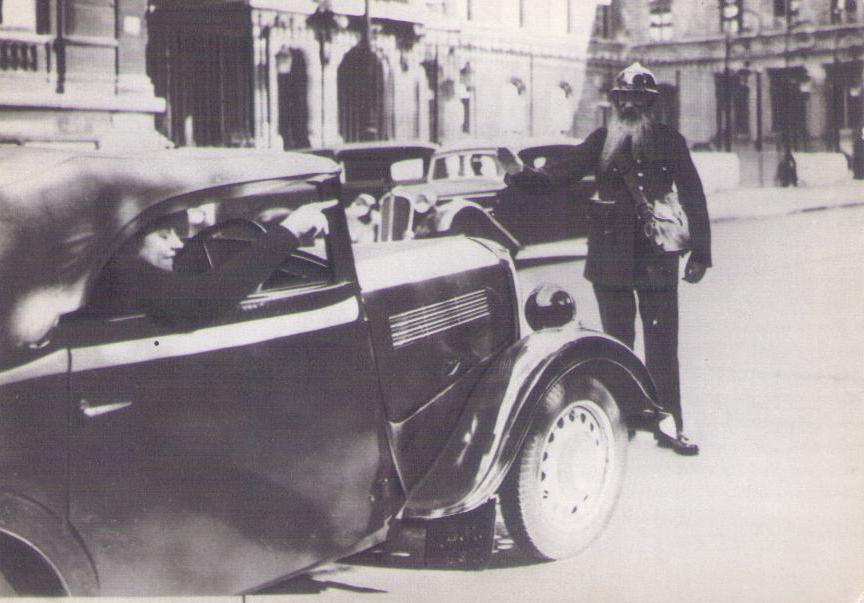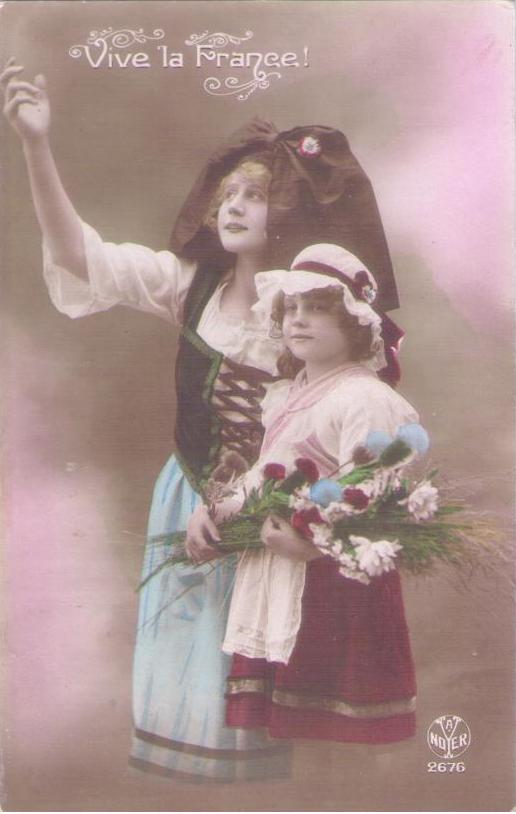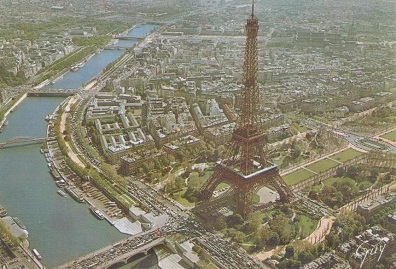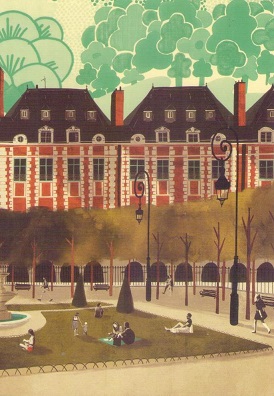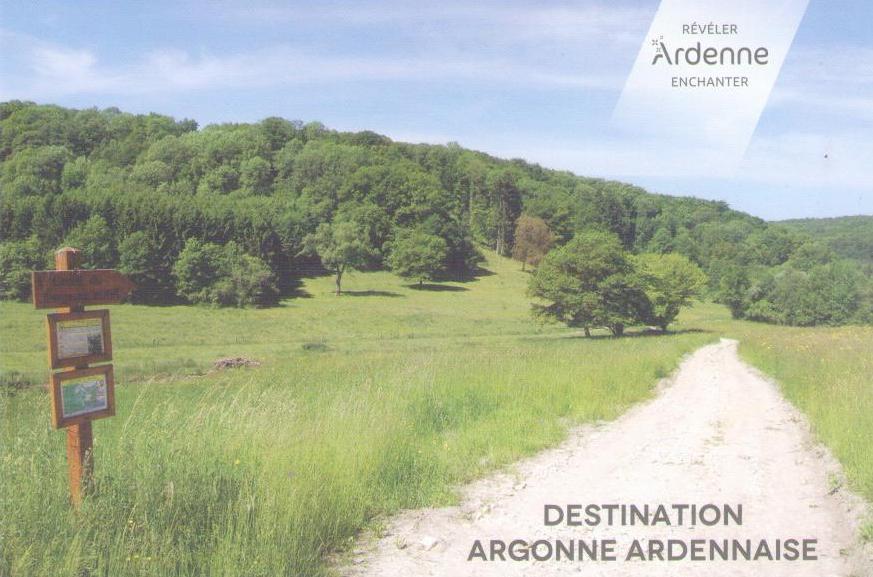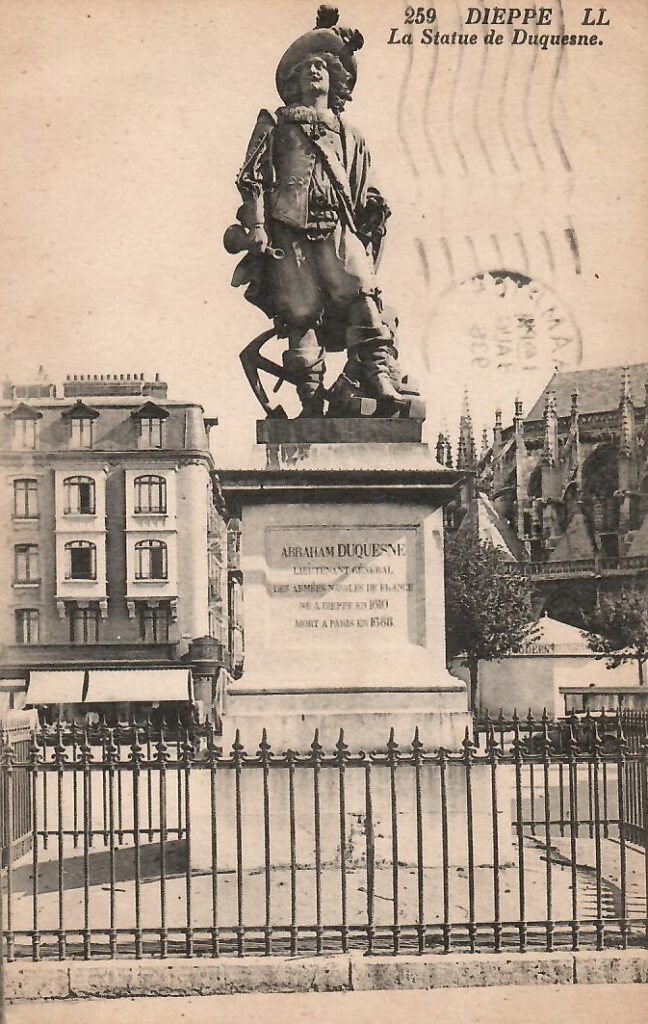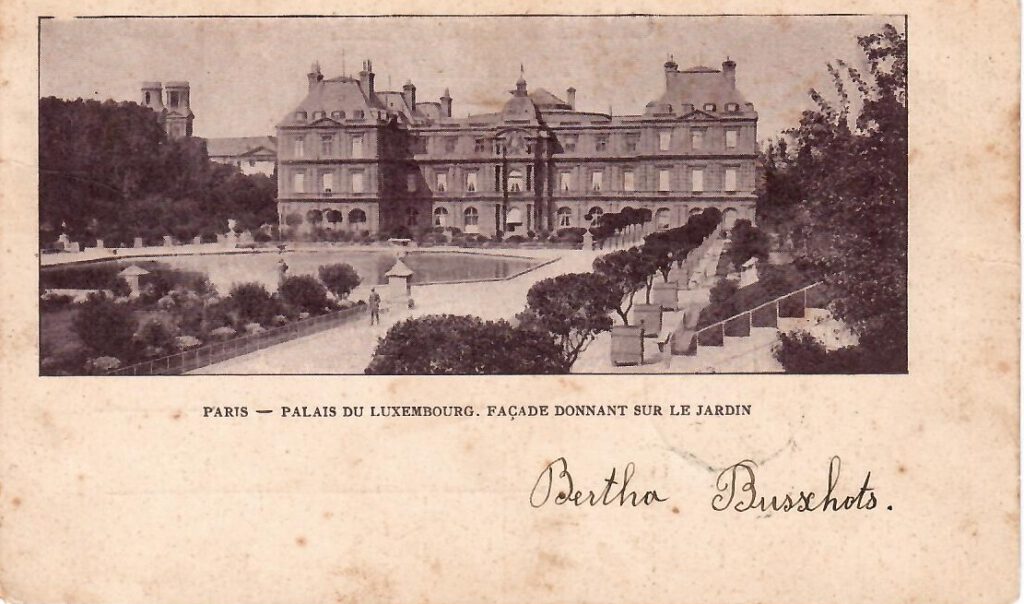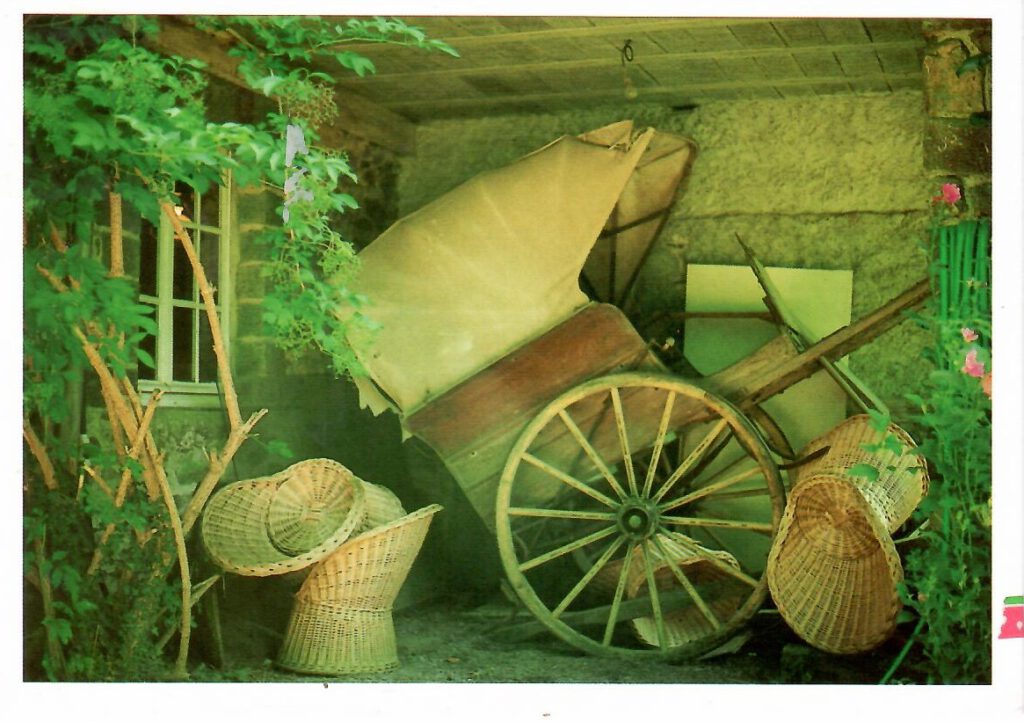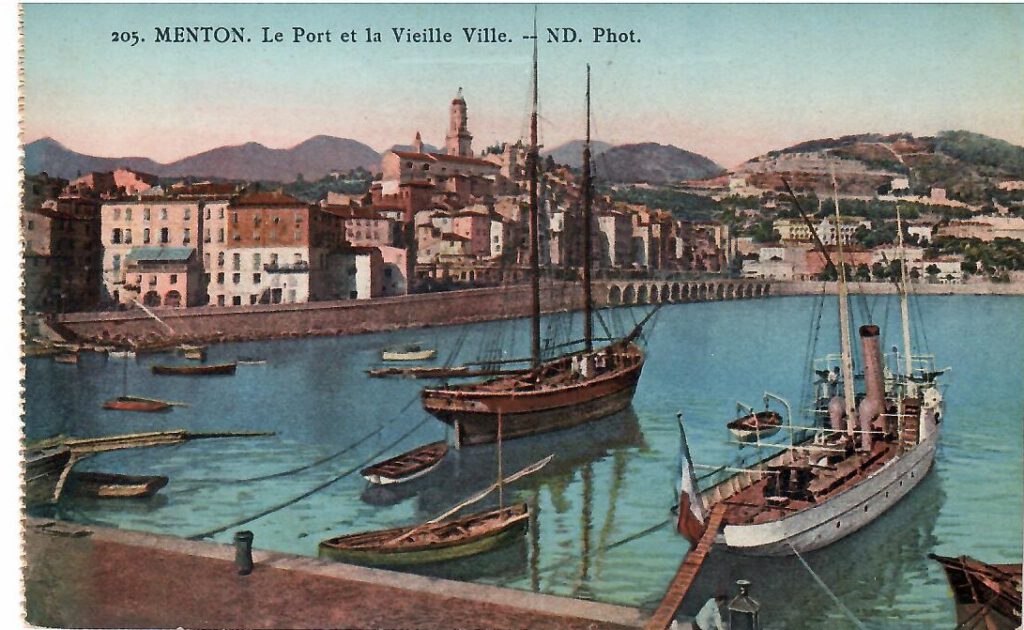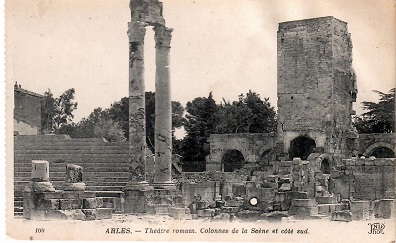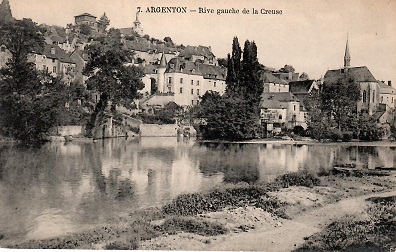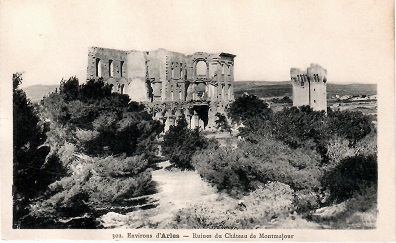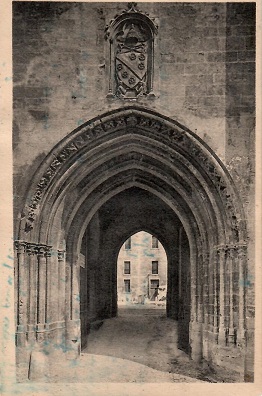-
Saint-Quentin – Theatre, Monument de 1587, Hotel de Ville
The indistinct postmark suggests this card may have been mailed in 1910. As is our wont, we wanted to know more about either the commune or the saint himself, so we went again to Wikipedia, which told us: “Saint-Quentin is a commune in the Aisne department in Hauts-de-France in northern France. It has been identified as the Augusta Veromanduorum of antiquity. It is named after Saint Quentin, who is said to have been martyred there in the 3rd century”. (We are almost 100% certain you will see that exactly the same way we did.) Grade: 2
-
Saorge – Vue Generale
Despite two postmarks with the stamp, we can’t make out the date of mailing. Even so, a nice view. Grade: 1
-
Vue de Saorge
In your search for Saorge postcards, you may not do better than this undivided back example, stamp and postmark on the front and two more postmarks on the reverse. Aged appropriately, but Grade: 1
-
Sospel, Vue sur la Bevera et le Barbonnet
Not postally used (part of a much longer message) with this final part covering the reverse. Grade: 4
-
Touet-sur-Var
Touët-sur-Var is a picturesque Medieval village perched on a rock-step of the mountains overlooking the Var river, about 50 km north of Nice. The station for the Train des Pignes is below the village. Two km west of Touët the Gorges du Cians goes north, between the Plateau de Dina to the west and the Giraud les Rocchaudes behind Touët. This card was mailed with its four stamps in 1925, apparently from Madeleine to Madeleine (sic), and here’s a translation of the message: “Why have you spoiled me so? Thank you for your delicate attention of which I was very touched. I think you always spend a pleasant holiday, and that you are healthy. Receive with all my wishes of happiness my best memory.” So our question would be: did she write this to herself, or merely a coincidence? Another postmark on the back. Grade: 1
-
Tourette-Levens, vue generale, cote Sud
From postmarks on front and back, we think the card was mailed in 1908. Grade: 3
-
Utelle – Vallee de la Vesuble
Mailed in 1903, with stamp, and postmarks on both sides. Undivided back. Grade: 3
-
Vallauris, Le Monument Commemoratif
Mailed on an unknown date, this sepia card has its stamp and indistinct postmark. Grade: 3
-
Les Alpes, Vallee de l’Ubaye – Camp de Restefond
Part of the Maginot Line, apparently unfinished when the fighting started. This card was written in 1930, but not postally used. A message covers the entire reverse. Grade: 4
-
Vence – Les Gorges de la Cagne
Vence, like every other commune in far southeastern France, has a long and rich history. Condensing Wikipedia, “Within the medieval walled village, the Peyra Gate was remodelled in 1810. The fountain was rebuilt in 1822 replacing an older one dating from 1578. Nearby is an oak, donated by François I and planted in 1538. The castle is today the Fondation Émile Hugues, a modern and contemporary art museum. The cathedral was built in the 4th century on the site of a Roman temple. The stone of the western façade dates from 239. Another, on the right, was engraved in December 220. Other stones in the external walls represent funerary dedications. A chapel in the cathedral has a mosaic by Marc Chagall, dated 1911. The rue des Portiques is a section of the old Roman road. The town has a small chapel, up above the Cité Historique Chapelle du Rosaire (1948, completed in 1951), decorated with stained glass and other fittings by Henri Matisse, who owned a home in the village towards the end of his life. Vence is famous for its spring water, which can be collected from numerous fountains in the town.” But you knew all this already. The card was written in 1921, with a message filling the reverse, but was not postally used. Grade: 4
-
Vence – Vieux Pont sur la Lubiune
We’re not able to determine when this card was mailed. Stamp, and indistinct postmarks on both sides. Actually the postmark on the reverse is clear but they didn’t include the year. Grade: 2
-
Vence – Post et Vielle Fontaine
Among Vence postcards, an imposing sight, mailed in 1905 (we believe), aged appropriately, with stamp and postmark. Grade: 1
-
Environs de Vichy – Les Malavaux
Two indistinct postmarks (and stamp) mean we aren’t certain when this card was mailed. But any undivided back postcard like this one went out long ago. Grade: 3
-
Vichy – Source Lucas
An early spa postcard, mailed in 1916 with stamp and two postmarks on the front. Grade: 3
-
Vichy. – La Source des Celestins
Elegant. We can’t make out the date on the postmark; the message seems to have been written in about 191_ (We can’t read that handwriting either. Actually after entering so many old cards from many countries, it’s a wonder anyone could read anything.) Grade: 3
-
Vichy. – Allee Centrale du Parc
Mailed in 1912, this postcard’s perforated left edge indicates it had been part of a set. A gracious scene. Grade: 2
-
Nice, Carnaval 1905
Beginning a series of oversized (5-1/2″ x 7-1/2″) unused contemporary cards with older photos. Signs of handling. Grade: 2
-
South of France, aperitif
Continuing a series of oversized (5-1/2″ x 7-1/2″) unused contemporary cards with older photos. Grade: 1
-
South of France, En Mediterranee 1930
Continuing a series of oversized (5-1/2″ x 7-1/2″) unused contemporary cards with older photos. Grade: 1
-
South of France, playing cards at a cafe, 1956
Continuing a series of oversized (5-1/2″ x 7-1/2″) unused contemporary cards with older photos. Grade: 1
-
Cannes, La Croisette 1920
Continuing a series of oversized (5-1/2″ x 7-1/2″) unused contemporary cards with older photos. Grade: 1
-
South of France, children on holiday
Continuing a series of oversized (5-1/2″ x 7-1/2″) unused contemporary cards with older photos. Grade: 1
-
South of France, L’heure de la pose 1950
Continuing a series of oversized (5-1/2″ x 7-1/2″) unused contemporary cards with older photos. Grade: 1
-
Nice, Fillette
Completing a series of oversized (5-1/2″ x 7-1/2″) unused contemporary cards with older photos. The card shows the effects of too much time in the racks. Grade: 4
-
Marine Militaire Francaise – “Belier” Torpilleur d’Escadre
Written by a soldier to a soldier in 1914, here’s an iconic wartime postcard with multiple 1914 postmarks but no need for a stamp (as an imprint on the reverse shows). Entirely apart from the historical value of the postcard, we enjoyed seeing that the name of the recipient was Monsieur Pierre Fromage. Yes, we know it’s not a unique name but we enjoyed seeing it anyway. Grade: 3
-
Le Bar et le Plateau de la Sarree (Chemin de fer du Sud de la France)
Mailed in 1904, with stamp and three postmarks (sending and receiving stations). Grade: 2
-
Paris, Circulation parisienne
The photo is older than the unused but slightly aging card. Grade: 1
-
Vive la France!
Unused. Old. Grade: 1
-
En Survolant Paris (Flying over Paris)
We have seen our share of Eiffel Tower postcards but we particularly like the perspective and clarity of this one, mailed in 1984 with stamp and fading postmark. That’s some traffic jam down there. Grade: 1
-
Paris, Place des Vosges
Mailed in 2019 with stamp and postmark. Grade: 1
-
Destination Argonne Ardennaise
From the Vouziers Tourism Office, a scene from the Circuit of Sergeant York (Chatel-Chehery), mailed in 2019 with stamp and postmark. Grade: 1
-
Dieppe, La Statue de Duquesne
Everything an antique postcard should be. Fred was on a voyage in 1936 and sent this card to America from Southampton in England (and the stamp is still there) explaining his itinerary — and the statue. He would not have known what was soon to happen. With postmark transfer on the front, and so on, this card is only Grade: 3 … but it is a great example of communication in that era. It deserves a good home.
-
Paris, Palais du Luxembourg
Old, and undivided back, with remnants of 1904 postmarks … but the stamp is long gone and the card can really only be a space filler. Grade: 5
-
Image de Bretagne
Mailed in 2021 with stamp, postmark, and attached labels and stickers and tape and … Grade: 4
-
Menton, Le Port et la Vielle Ville
Nice old and unused card (pun intended) with left perforated edge, so it had been part of a set. Quieter times. Grade: 1
-
Arles, Theatre romain
… Colonnes de la Seine et cote sud — sorry, lacking accents and diacritical marks but we must persevere regardless. Unused and heavily (but appropriately) aged old postcard. Grade: 2
-
Paris, Parc Monceau
The park was established by Phillippe d’Orléans, Duke of Chartres, a cousin of King Louis XVI. In 1769 he had begun purchasing the land where the park is located. In 1778, he decided to create a public park, and employed the writer and painter Louis Carrogis Carmontelle to design the gardens. Unused old postcard, aged but clean. Grade: 1
-
Argenton, Rive gauche de la Creuse
Argenton, right in the heart of France, is a small town we didn’t know, so when we went to Wikipedia it described how things were not so far from when this unused, aged postcard was made: “The Encyclopædia Britannica Eleventh Edition (1911) described the city: ‘The river is crossed by two bridges, and its banks are bordered by picturesque old houses. There are numerous tanneries, and the manufacture of boots, shoes and linen goods is carried on’. Since then, one of the riverside mills has been converted into the ‘Museum of the Shirt and Masculine Elegance’.” That alone made the search worthwhile! Grade: 1
-
Environs d’Arles, Ruines du Chateau de Montmajour
On this unused and very old postcard, a photo of what seems to correspond to this (courtesy of Wikipedia, abridged): “Montmajour Abbey was a fortified Benedictine monastery built between the 10th and 18th centuries on what was originally an island five kilometers north of Arles. The abbey is noted for its 11th–14th-century graves, carved in the rock, its subterranean crypt, and its massive unfinished church. It was an important pilgrimage site during the Middle Ages, and in the 18th century it was the site of a large Maurist monastery, now in ruin. The abbey and the landscape around it were frequently painted and drawn by Vincent van Gogh. In 1967, production for the film The Lion in Winter featured the abbey, Katharine Hepburn’s dressing room was infamously accommodated in the basement. It has been listed since 1840 as a monument historique by the French Ministry of Culture.” So even innocuous vintage postcards like this can have intriguing backstories. Grade: 1
-
Avignon, Palais des Papes
The Palais des Papes (Palace of the Popes) is one of the largest and most important medieval Gothic buildings in Europe. Once a fortress and palace, the papal residence was a seat of Western Christianity during the 14th century; six papal conclaves were held in the Palais, and since 1995, the Palais has been classified, along with the historic center of Avignon, as a UNESCO World Heritage Site. The unmailed card has some ink transfer most notable along the lower left edge, and is heavily aged but otherwise clean. Grade: 3

